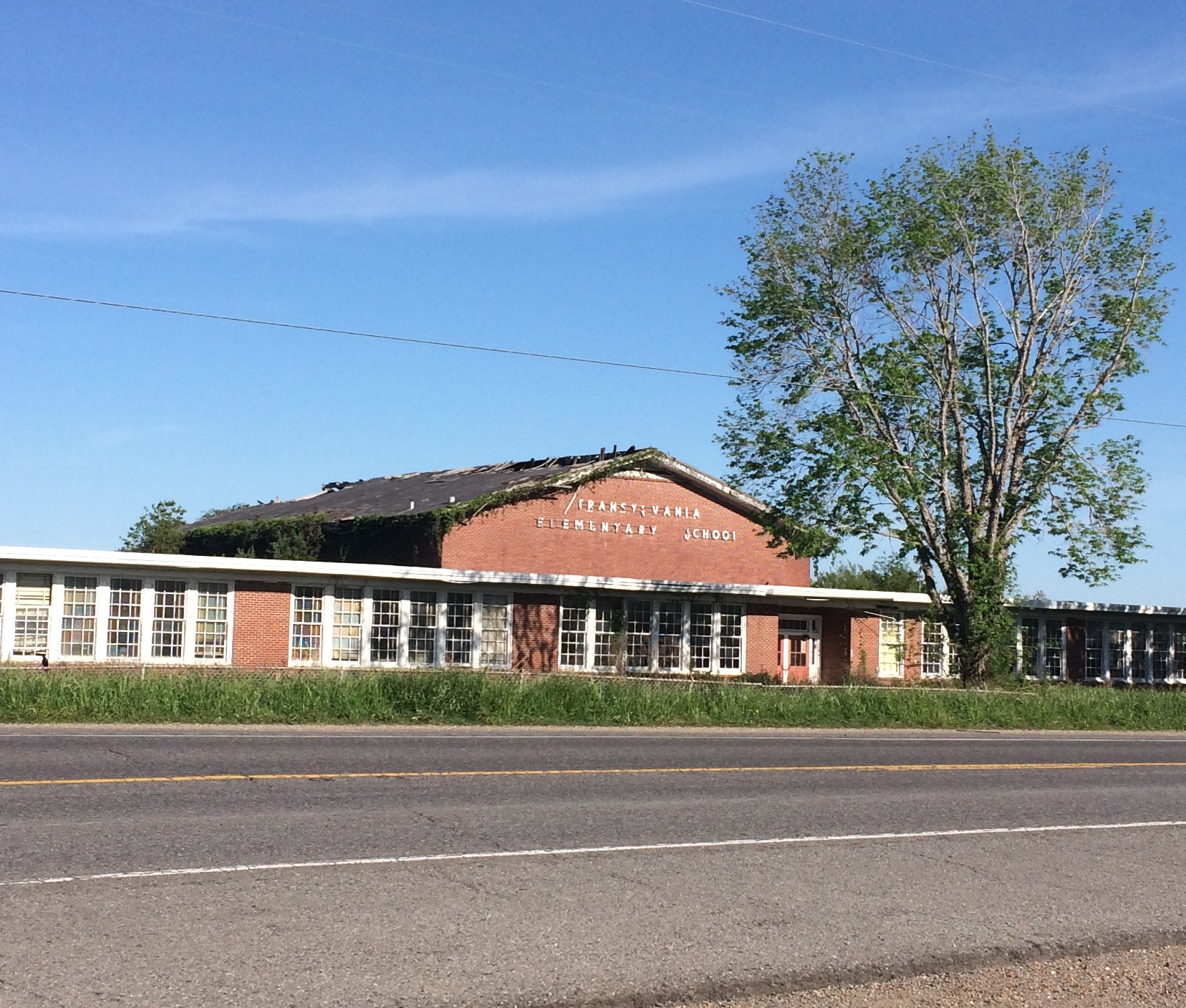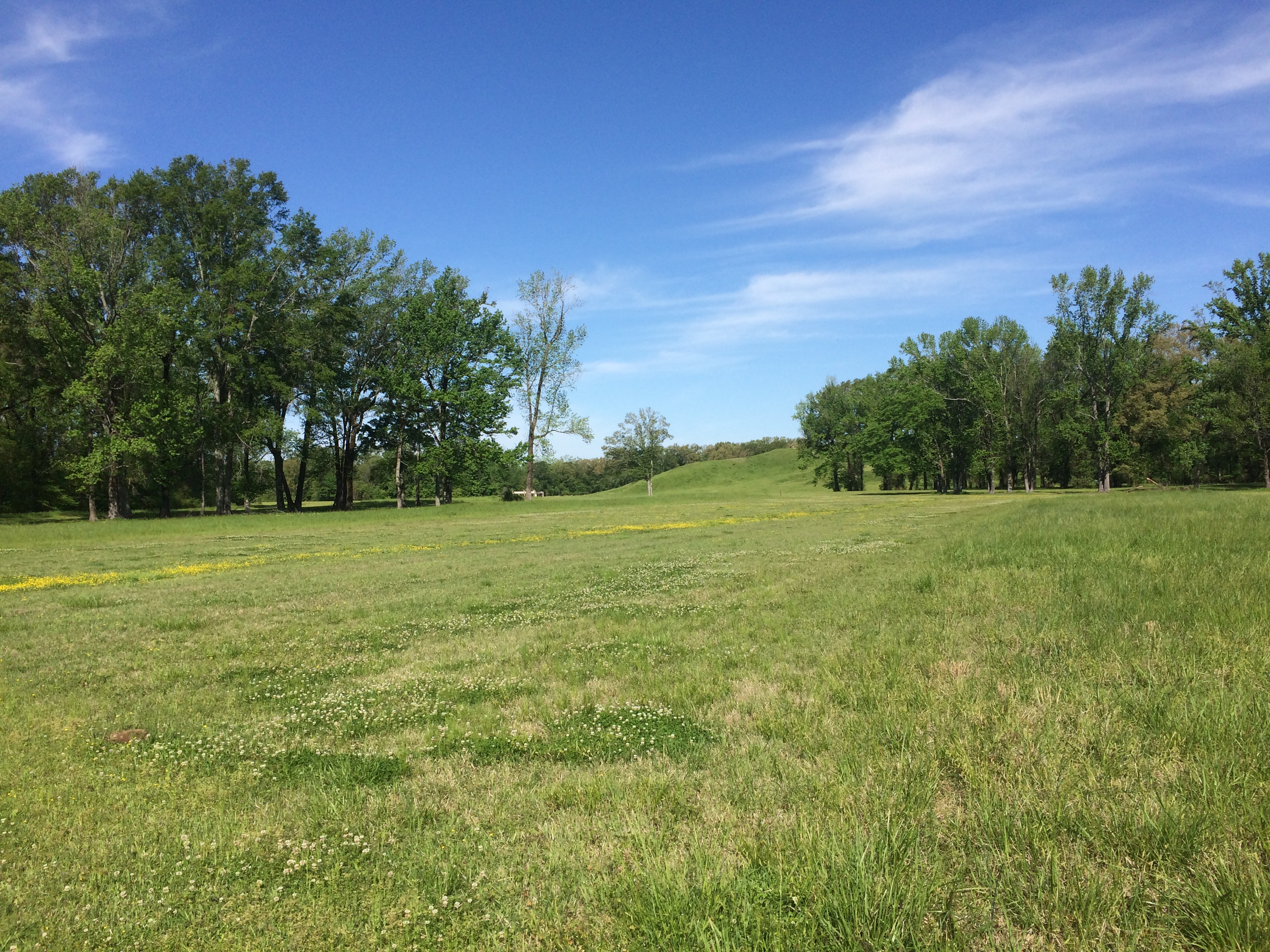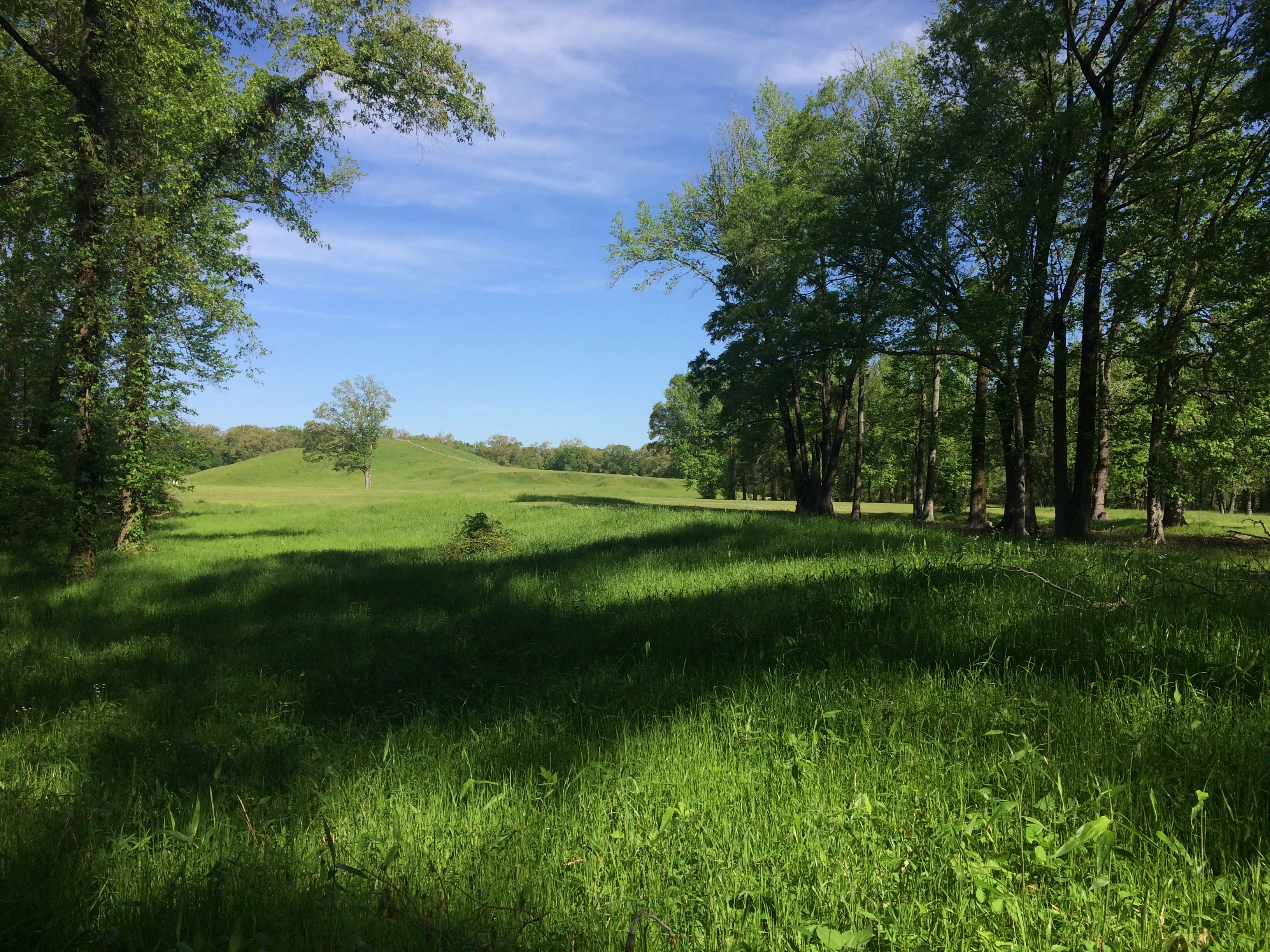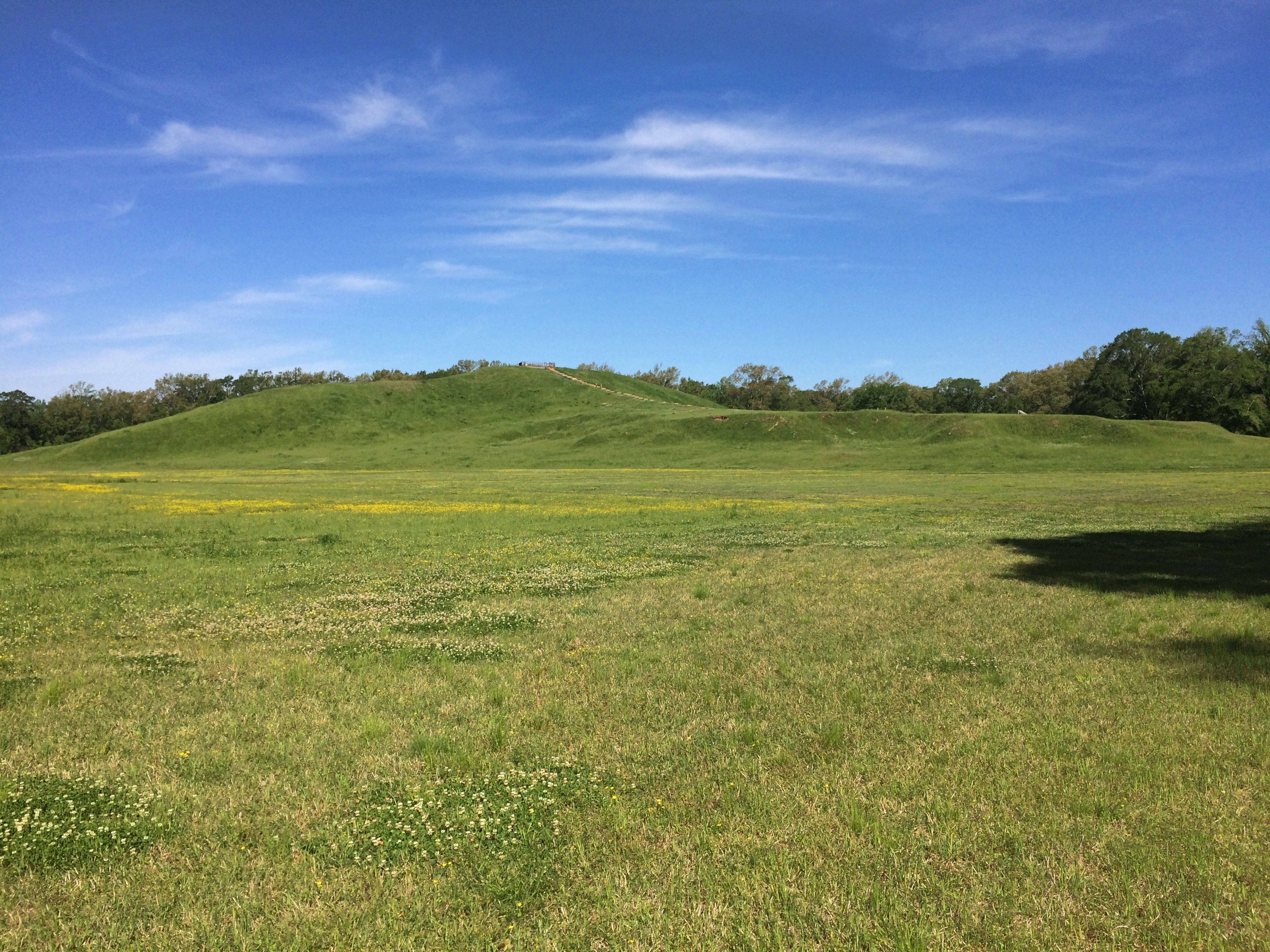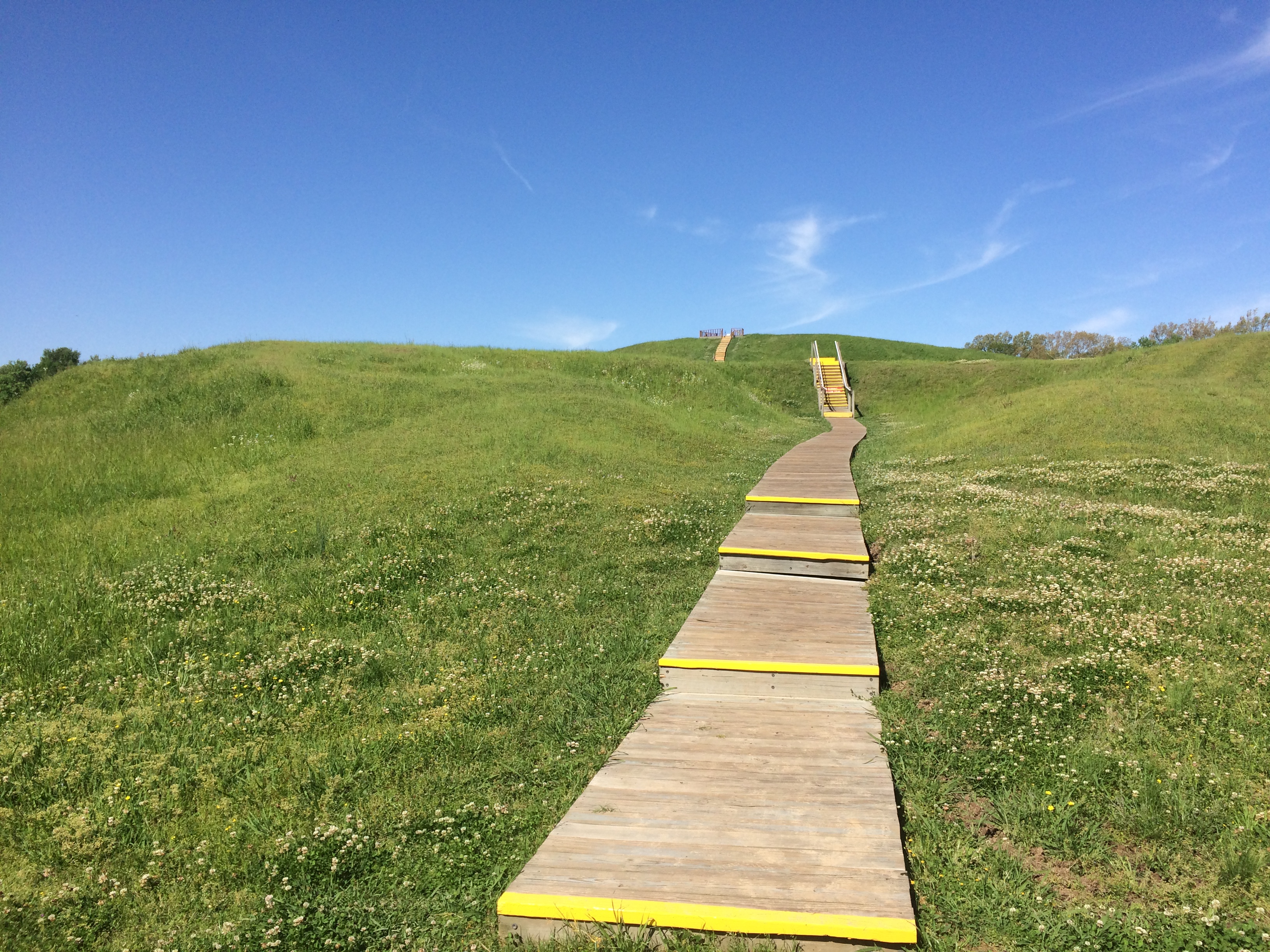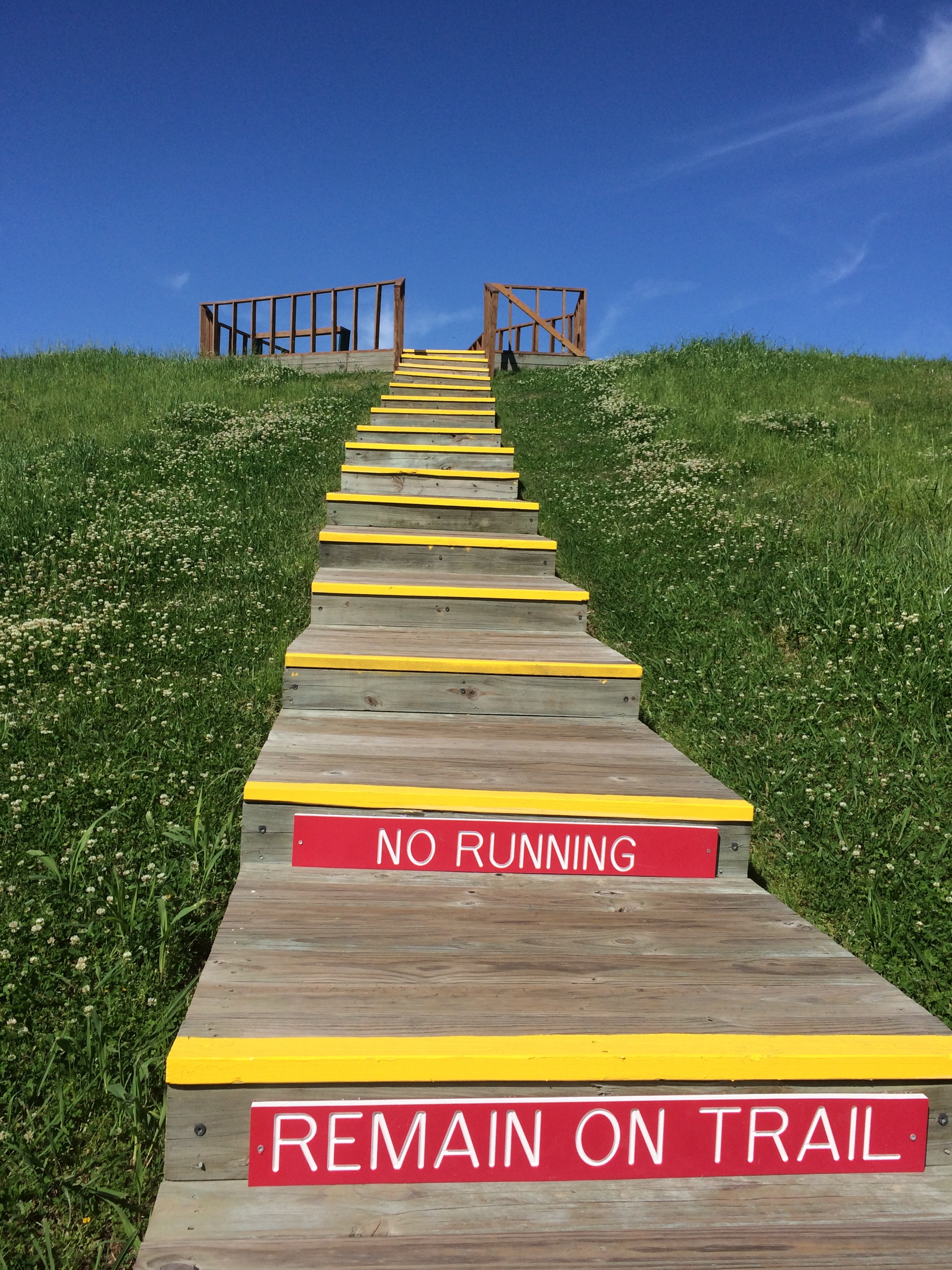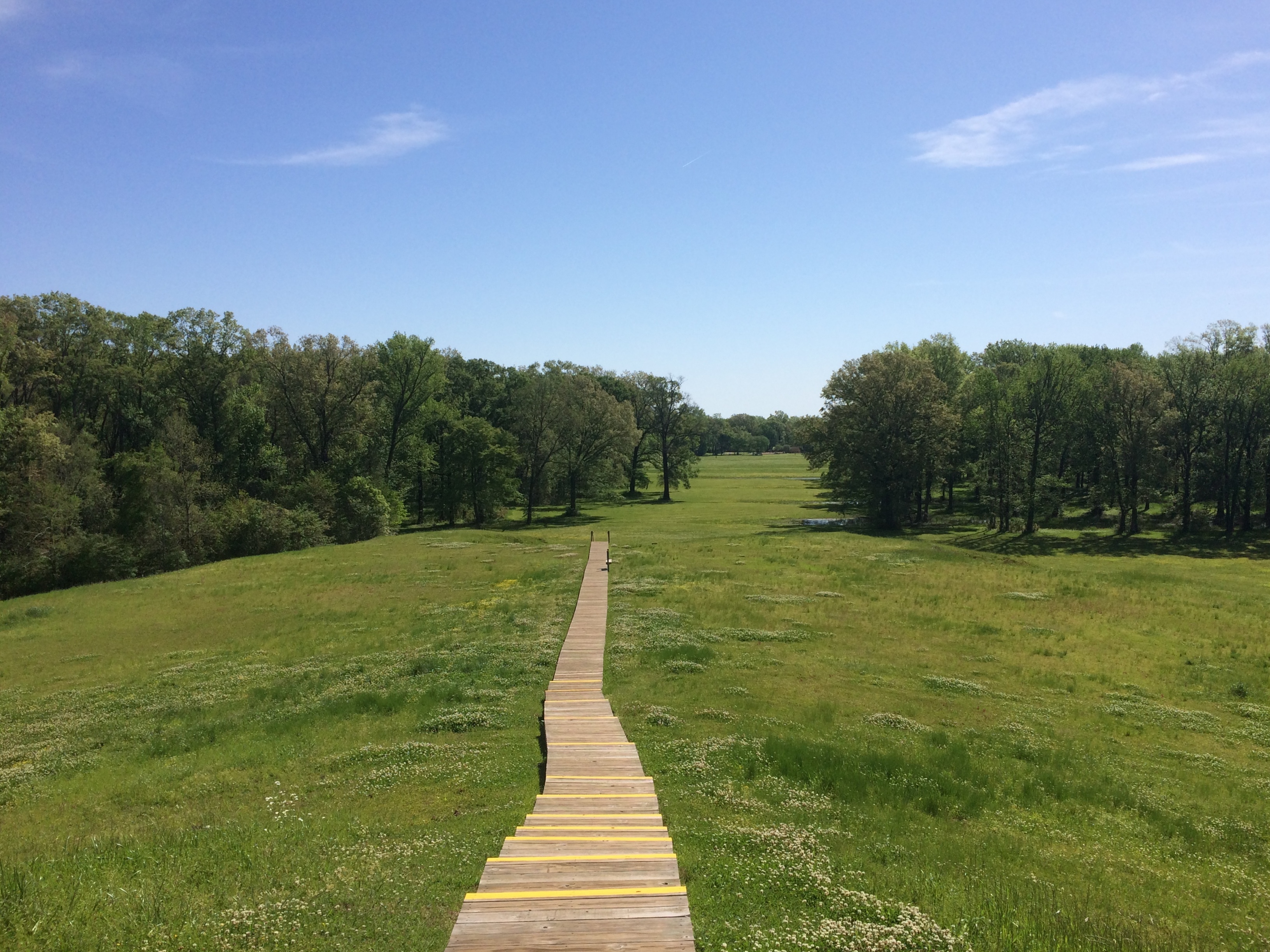West from Vicksburg and a little north of I-20 on US 65 is Transylvania, Louisiana, pop. scant. Now I can say I’ve been to Transylvania. I missed a turn, and realized it after a few miles, by which time I was near a school that needs roof repairs. Or an abandoned school building. I pulled over within sight of the structure to consult my maps.
Soon I was headed by the correct small roads to Poverty Point World Heritage Site, which has an address in Epps, Louisiana, but that’s just the nearest currently inhabited town. The site is firmly in the countryside.
Its signs stress the World Heritage status accorded the site a few years ago. Poverty Point also happens to be a U.S. National Monument.
On this site, in the second millennium BC, the people who dwelled here spent centuries building enormous mounds and ridges of earth by hand. The thought of that conjures up a past so remote that our image of them is one of shades, whispering in a language we can’t comprehend, pushing this collective building goal forward for reasons we cannot possibly know.
What you see close after the beginning of the third millennium AD is wide green fields, modestly undulating. Off in the distance are copses of trees, more fields and other natural land contour. The day was pleasantly warm.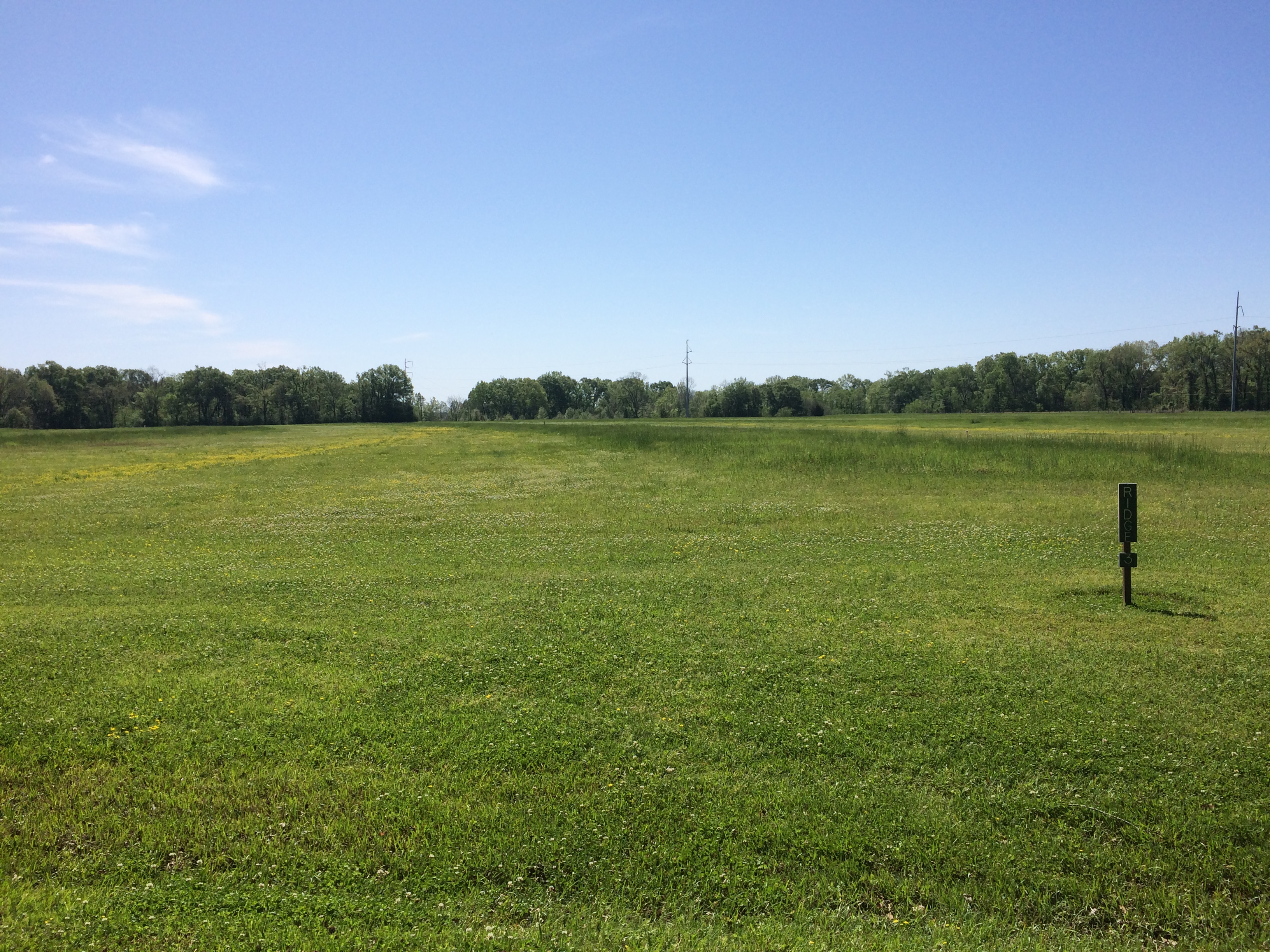
“Hand by hand and basketful by basketful, men and women shaped nearly 2 million cubic yards of soil into stunning landscapes,” the site’s web site says. “The result was a massive 72-foot-tall mound, enormous concentric half-circles and related earthworks that dwarfed every other earthen monument site for 2,200 years.”
Mound B beats them all. The largest ever built by a hunter-gatherer population.
A further estimate on a sign near the mound says it would have taken 15.5 million loads of earth to build this single mound.
It’s a brain bender. Imagine a time and place when virtually everything you know, or have seen, or believed, wouldn’t exist for thousands of years.
